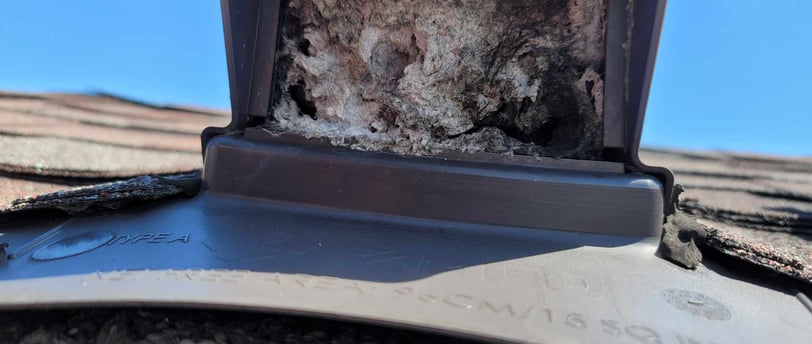Why Insulation Removal is Important!
You probably have never considered why cleaning out old insulation is important. Old Insulation is one of the leading causes of home safety and poor air quality. Do something about it before its too late!
10/14/20232 min read


Insulation removal is a process of safely and effectively removing existing insulation materials from a building's walls, ceilings, floors, or attics. There are several reasons why insulation removal might be necessary, and it offers various benefits related to energy efficiency, health, and safety.
Reasons for Insulation Removal:
Damaged or Deteriorated Insulation: Over time, insulation can become damaged due to moisture, pests, or other factors. Deteriorated insulation loses its effectiveness and needs to be removed to maintain energy efficiency.
Mold or Mildew Growth: If insulation becomes damp or exposed to moisture, it can foster the growth of mold or mildew. Removing affected insulation is crucial to prevent health issues and further damage to the structure.
Pest Infestation: Insulation can attract and provide shelter for pests such as rodents or insects. Removal is necessary to eradicate infestations and prevent future pest problems.
Renovation or Remodeling: During renovation or remodeling projects, existing insulation may need to be removed to accommodate structural changes, install new insulation, or upgrade to more efficient insulation materials.
Health Concerns: Some older insulation materials, such as asbestos or certain types of fiberglass, can pose health risks. Removing these materials is necessary to create a safer indoor environment.
Benefits of Insulation Removal:
Improved Energy Efficiency: Removing old or ineffective insulation and replacing it with modern, high-performance insulation can significantly improve a building's energy efficiency. This leads to lower utility bills and reduced energy consumption.
Better Indoor Air Quality: Removing contaminated or deteriorated insulation, especially if it contains mold or other pollutants, improves indoor air quality and creates a healthier living or working environment.
Preventing Structural Damage: Removing damaged insulation helps prevent further deterioration and potential structural damage to the building caused by moisture, pests, or mold growth.
Enhanced Comfort: Proper insulation removal and replacement ensure that the building maintains a consistent and comfortable indoor temperature, regardless of the external weather conditions.
Safety Considerations:
Protective Gear: Safety gear, including gloves, protective clothing, eye protection, and respirators, should be worn during insulation removal to protect against exposure to harmful substances.
Proper Disposal: Insulation should be disposed of in accordance with local regulations and guidelines. Some insulation materials, such as asbestos, have specific disposal requirements due to their hazardous nature.
Professional Removal: In cases of asbestos or other hazardous insulation materials, it's essential to hire trained professionals to safely and effectively handle the removal process.
Ventilation and Containment: Adequate ventilation and containment measures should be in place during the removal process to minimize exposure and ensure the safety of workers and occupants.
In summary, insulation removal is essential for maintaining a safe and efficient living or working environment. It addresses various concerns related to health, energy efficiency, and the structural integrity of a building. Safety precautions and proper disposal methods should be followed during the removal process to ensure the well-being of individuals and the environment.
